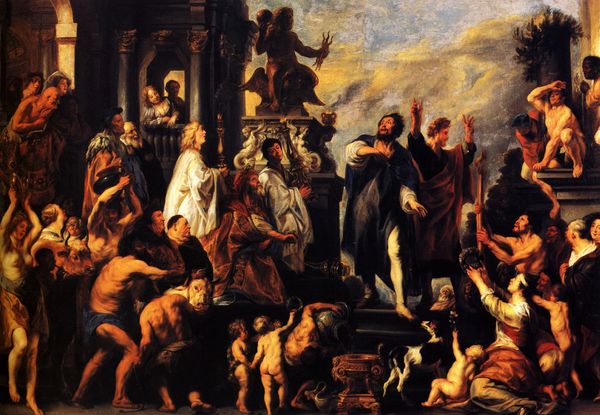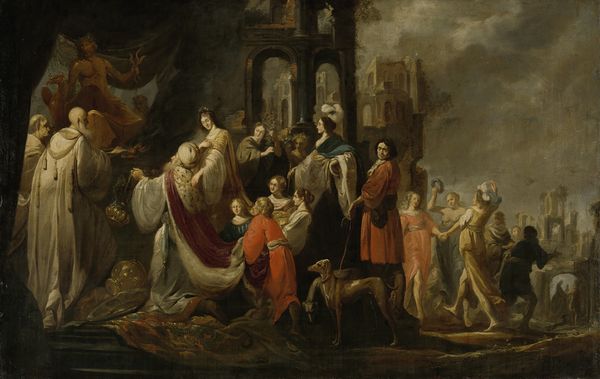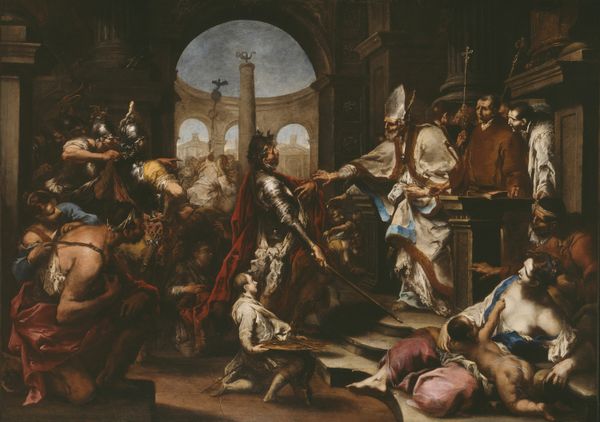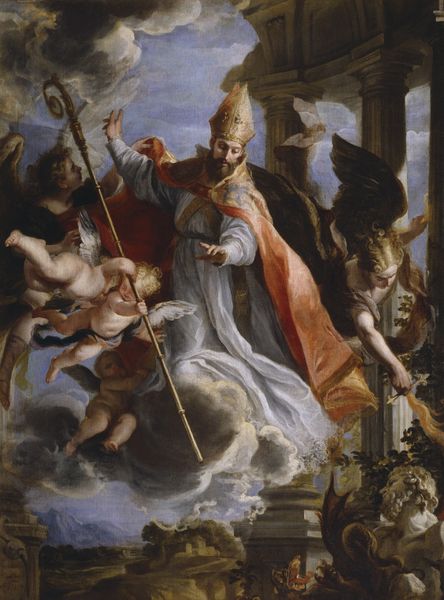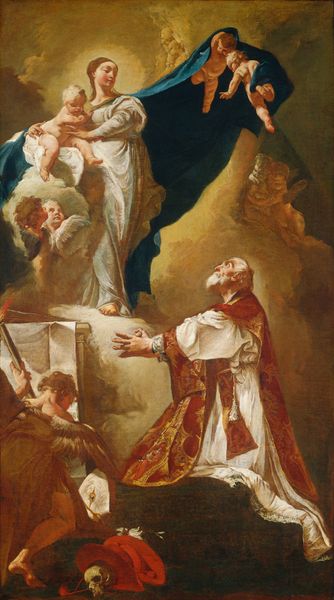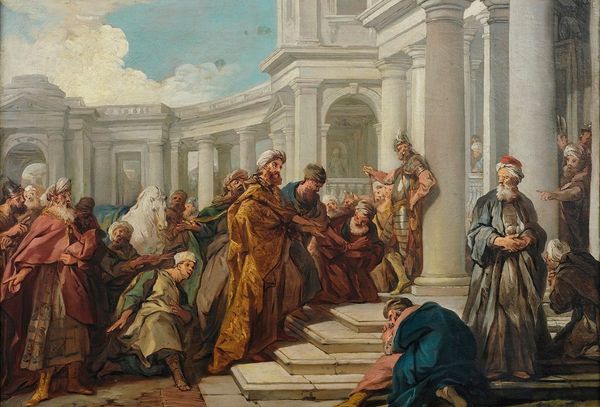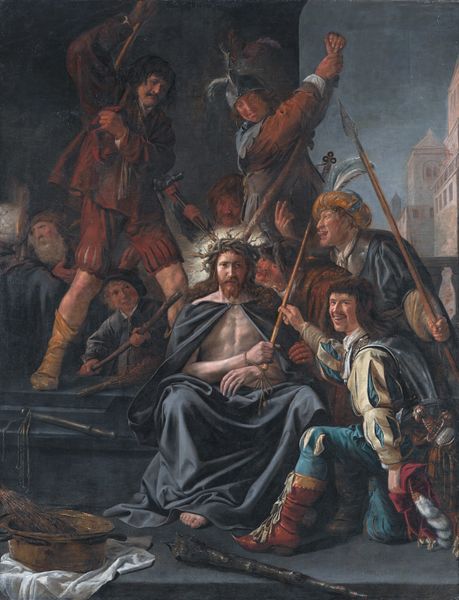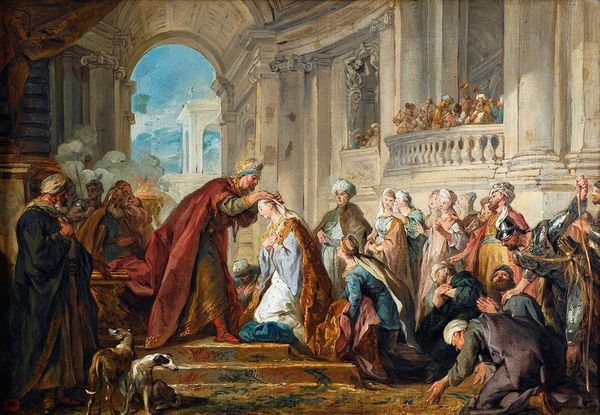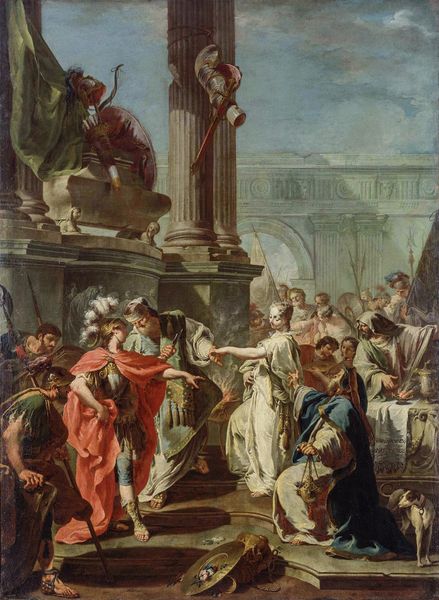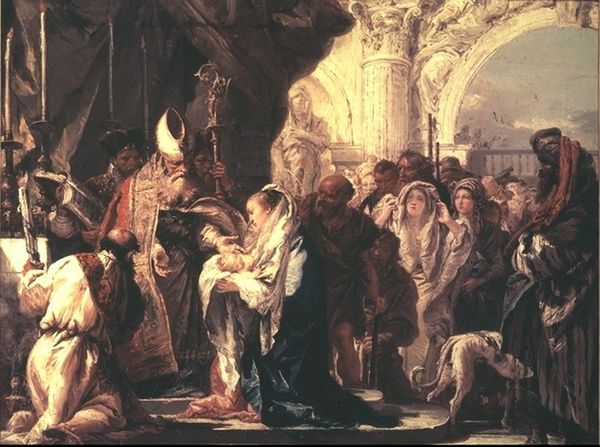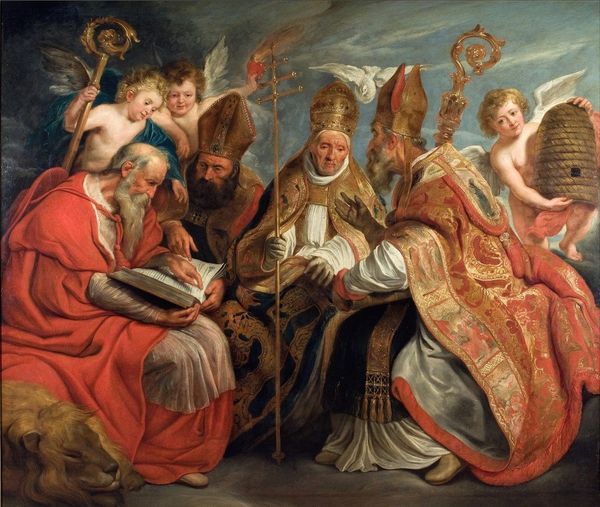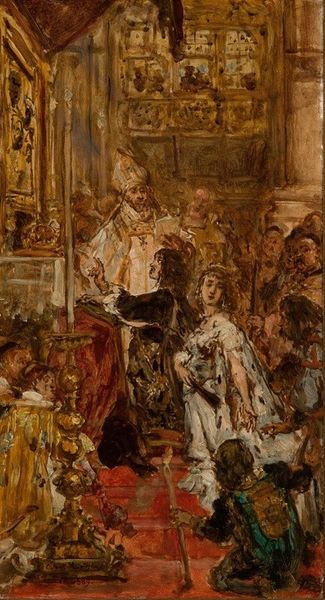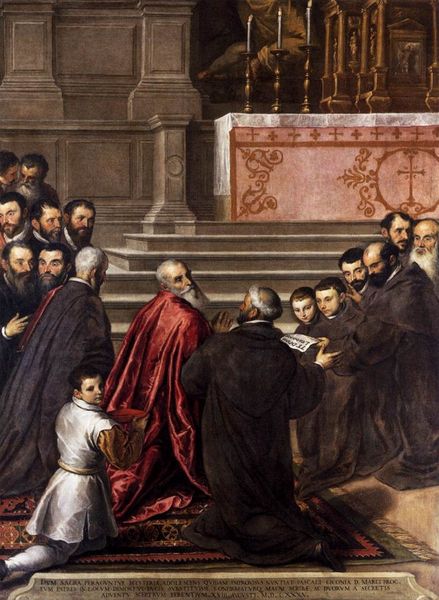
Emperor Theodosius Forbidden by St Ambrose To Enter Milan Cathedral 1620
0:00
0:00
oil-paint
#
portrait
#
baroque
#
oil-paint
#
figuration
#
oil painting
#
famous-people
#
history-painting
#
portrait art
Dimensions: 149 x 113 cm
Copyright: Public domain
Editor: So here we have Anthony van Dyck's oil painting, "Emperor Theodosius Forbidden by St Ambrose To Enter Milan Cathedral," painted around 1620. It's striking how tactile the fabrics seem – especially Ambrose's ornate vestments. How do you read the social implications in van Dyck’s portrayal of the scene? Curator: Well, let's think about the production of this piece. Oil paint, back then, was a significant commodity. Who could afford to commission such a large work, using so much expensive pigment? It’s clearly meant for the upper class and its construction celebrates and reiterates power structures in society, doesn't it? Look at the detailed rendering of clothing, as status display; from the rough-spun wool to luxurious damasks! Editor: Yes, and the very act of depicting this power struggle, using these expensive materials… there’s a real tension there. The painting itself becomes an object embodying that conflict. Is it trying to make a political statement, or to elevate painting’s value through historical subjects? Curator: Exactly. Think of the labor involved in grinding the pigments, stretching the canvas. How might those hands and processes speak of class differences, echoing Theodosius' power compared to Ambrose? Van Dyck emphasizes the tangible objects and their making – it isn't simply recording history. This canvas performs and reinforces particular societal functions. And the baroque theatricality makes it seem the canvas itself, the act of art-making, plays the main part. Editor: That gives me a new lens for appreciating Van Dyck – seeing it not just as capturing a historical event, but as a product with its own economic and material narrative. Curator: Precisely! Now, whenever viewing artworks, perhaps we ought to inquire – how does its own production highlight existing power relationships and its place within them?
Comments
No comments
Be the first to comment and join the conversation on the ultimate creative platform.
